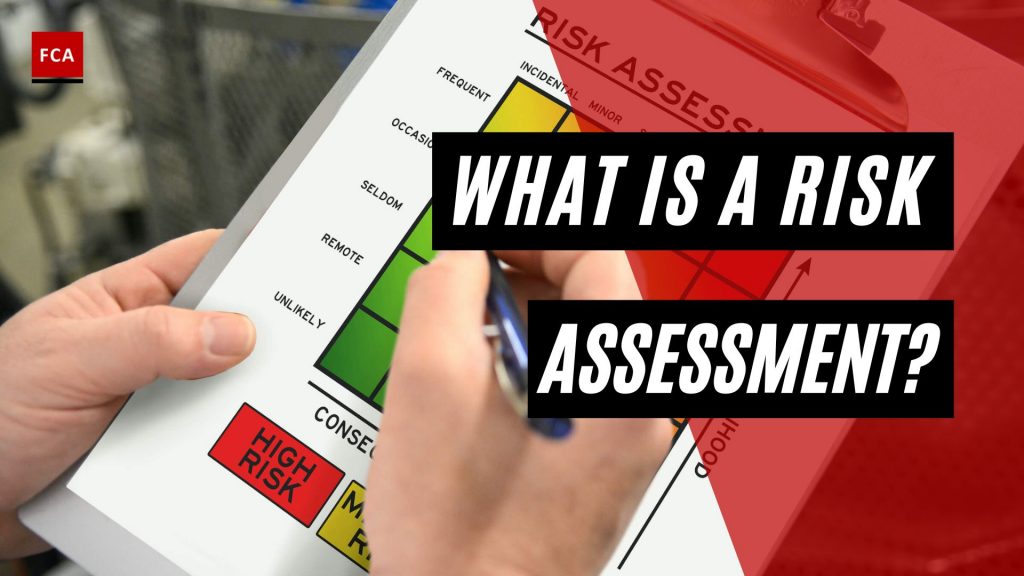What is a risk assessment? Risk assessment is a process that involves addressing all identified risks. Risk assessment is a key tool for the risk management process, which is performed for all types and categories of identified risks at all levels within an organization. Different categories of risks may be financial risks, environmental risks, strategic risks, operational risks, reputational risks, etc.
What Is A Risk Assessment?
An organization is required to perform periodic risk assessments to protect the assets, systems, and other resources. Risk assessment helps in reducing the chances of injuries, mismanagement of activities at the workplace, and the chance of the occurrence of different hazards and incidents.
To perform an effective risk assessment, a series of steps are to be performed by the risk management team or risk owners. Risk assessment involves performing an inherent and residual risk assessment of identified risks, where impact and likelihood assessments are performed to identify key and significant risks.
To perform an inherent and residual risk assessment, risk owners use data from various risk sources, such as internal audit reports, past incidents reports, and loss databases, which are maintained in an organization. An assessment of the impact and likelihood of risks is performed, to the extent possible, based on available information or factual data.
Risk assessment is performed for various processes and sub-processes such as finance, financial reporting, taxation, and budgeting, among others. To perform such process and sub-process level risk assessment, the organizations develop a risk assessment and management team, which work under the risk management function or department. This team works in collaboration with various departments to help them in the identification of their respective risks and perform assessments.
In other cases, risk identifiers are the employees who own the process and related risks, such as a Chief Financial Officer, being the head of the finance department, is the main risk owner for all finance-related activities and processes. It does not mean that other finance employees do not own the finance risks but the ultimate responsibility of taking ownership of risk identification, assessment, and management rest with the Chief Financial Officer of the company. Similarly, each departmental head, being part of the senior management, owns the responsibility for the assessment of respective departmental risks.
Stakeholders Involved in Risk Assessment:
Following are the key stakeholders within an organization, who must be involved in the process of risk assessment activities. The level of involvement may differ, but the objective is participation in the risk
assessment activities.

Chief Executive Officer (CEO)
The Chief Executive Officer (CEO), being the head of the management team, has overall responsibility to ensure that a dedicated risk management function is established, which is responsible for performing risk management activities. Such risk management activities include performing risk assessment procedures. The CEO delegates the responsibility for establishing risk management function to the
management team.
The CEO of an organization is supposed to review all the significant risks and issues identified by management and provide feedback and support to the management for mitigation of identified significant risks and issues. The CEO periodically reviews the results of risk assessment for different
areas and functions of the organization.
Senior Management
Senior management is the highest level of management within an organization. Comprised of departmental heads, it is required to identify and assess overall and departmental level risks periodically. All departmental level key risks and risk assessment results are reported to the CEO by the management team, for his or her review and appropriate feedback.
Senior management devises a robust mechanism to perform a risk assessment and disseminate the mechanism, to the middle management for performing periodic risk assessment activities.
Senior Managers / Managers
Middle management, comprising senior managers and managers, follows the mechanism and performs risk assessments for their relevant risks and compiles risk inventory and risk assessment results for management’s review and feedback.
As middle management works in different departments and performs daily business and operational activities, it is then responsible for ensuring that risk assessments are performed for every process and activity of the department. Middle management also supervises the lower-level staff; therefore, all operational level risks are known to them. Middle management is better positioned to identify the processes and activities at the departmental and unit level; therefore, risk assessment is best performed by the middle management.
It works in close collaboration with managers of other departments, vendors, regulators, and other stakeholders; therefore, they better know the processes and controls, built-in those processes. As a result, the operational risks identification and assessment process starts from the managerial level.
Final Thoughts
The identification of hazards that could have a negative impact on an organization’s ability to conduct business is known as risk assessment. These assessments aid in identifying these inherent business risks and providing measures, processes, and controls to mitigate their impact on business operations.
A risk assessment framework (RAF) can be used by businesses to prioritize and share the details of their risk assessment, including any risks to their information technology (IT The RAF assists an organization in identifying potential hazards, as well as any business assets put at risk by these hazards, as well as potential fallout if these risks








